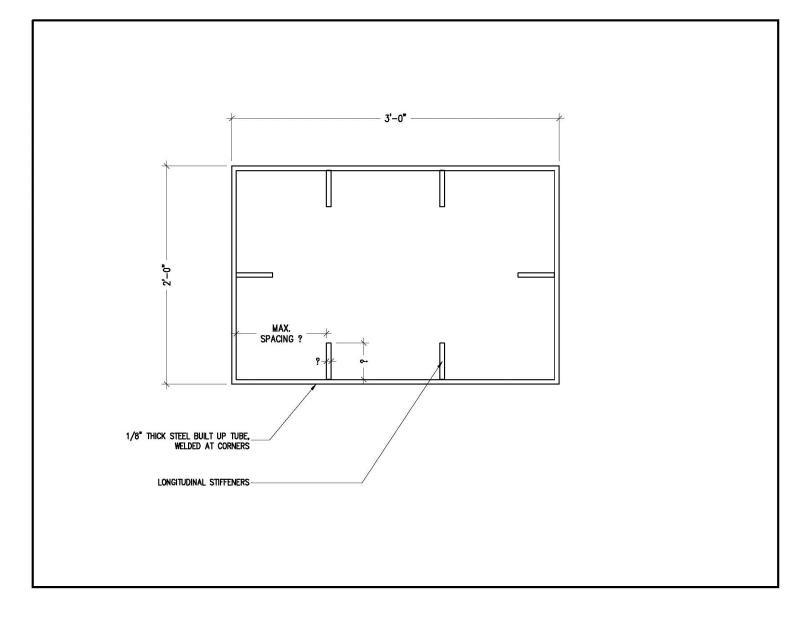1SEngineer
Structural
- Aug 27, 2007
- 37
I'm working on a very unorthodox design that requires the use of 1/8" steel plate to create large tubular sections. The plate will be cut from sheet and welded at the corners of the box. The rectangular dimensions vary quite a bit. I have attached a sketch of one of the larger shapes...which is 24"x36". We are trying to using the 1/8" walled tubes as a structural element to eliminate the cost of heavier steel "bones".
So...
1) Can I...and/or should I...use longitudinal stiffeners to reduce b/t to acceptable AISC limtis? I should then be able to use standard HSS design criteria once the section is stiffened.
2) Where can I find information on designing the stiffeners? (I have been directed to NACA Technical Papers...but not being too familiar with these...I've decided to give EngTips a go. Perhaps someone can abbreviate my search.)
3) Or...perhaps someone can offer another economical solution?
Thanks in advance for any help!

So...
1) Can I...and/or should I...use longitudinal stiffeners to reduce b/t to acceptable AISC limtis? I should then be able to use standard HSS design criteria once the section is stiffened.
2) Where can I find information on designing the stiffeners? (I have been directed to NACA Technical Papers...but not being too familiar with these...I've decided to give EngTips a go. Perhaps someone can abbreviate my search.)
3) Or...perhaps someone can offer another economical solution?
Thanks in advance for any help!

